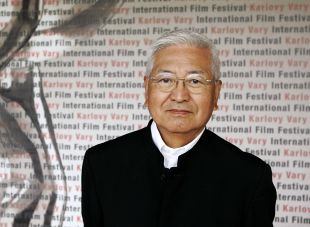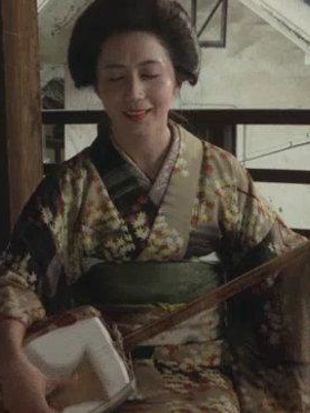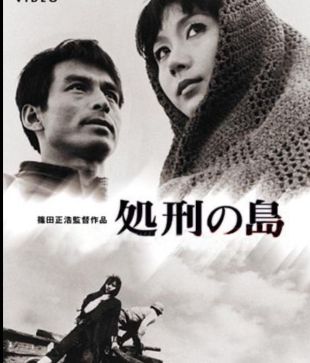Masahiro Shinoda is one of the most prominent filmmakers of the Japanese New Wave, along with Nagisa Oshima and Shohei Imamura. While Oshima's films were often a venue for political provocation and Imamura's work seemed to be a bawdy refutation of Yasujiro Ozu's refined passivity, Shinoda's movies detail the spiritual emptiness of post-war Japanese life and search for some essence of the Japanese character.
Shinoda was born into one of the most illustrious families in central Gifu Prefecture in 1931. His ancestors were large landowners and village leaders of a small town that is now part of Gifu City. They also had a long literary and cultural heritage. His great uncle was the model for the main character in one of Toson Shimazaki's novels, and Shinoda's cousin is one of Japan's leading abstract calligraphers. As a child, Shinoda was studious, applying himself to mathematics and physics; but by the end of World War II, he experienced the same sort of bitter disillusionment as many of his generation. Shinoda came to view the cold rationality of science as instrumental in Japan's ability to wage the war. Later, Shinoda entered Waseda University and was one of only three students enrolled in its theatre history program. There he studied under some of the most renowned experts in such traditional Japanese forms of drama as Noh, Kabuki, and Bunraku (puppet theatre). As he continued to study, he felt a passionate need to understand what quirk in the Japanese character lead to the disaster of the Second World War.
In 1953, Shinoda was forced to withdraw from university after his mother died. Though his family had a distinguished lineage, its financial status was depleted after the war, and he had to find work. In desperation, he took and passed the Shochiku studios entrance exam and soon became an assistant director. After the financial success of Oshima's Town of Love and Hope (1959), Shinoda was given permission to write and direct his first film. The result was One Way Ticket for Love (1960), which proved to be a box office failure, and Shinoda soon found himself in the assistant director's chair again; this did not last long, though. The critical and commercial success of Oshima's shockingly bleak Cruel Story of Youth (1960) both strengthened Shochiku's willingness to take risks on young directors and heralded the beginning of the Japanese New Wave. Shinoda's first success occurred not long afterwards, when he teamed up with poet (and later, filmmaker) Shuji Terayama to create Youth in Fury (1960). Shinoda's films are populated with people who passionately, irrationally sacrifice themselves for love and beauty, be it the nihilist gangster who risks jail for a beautiful young thrill-seeker in Pale Flower (1963), the jealous apprentice consumed with love for her painting teacher in With Beauty and Sorrow (1965), or the lovers who choose death over separation in Double Suicide. In a manner akin to the films of Kenji Mizoguchi, Shinoda presents this self-destruction with a sense of unavoidable fate; his protagonists are unwilling or unable to break themselves from the spiral towards the abyss, their respective journeys accentuated by the filmmaker's bold experimentation with narrative and visuals. This fusion of traditional plot elements with a challenging formal style is best exemplified in his masterpiece Double Suicide, which reworked a classic Bunraku play into a modernist work of art. The black-clothed stagehands that animate the dolls in traditional Puppet Theatre are recast here as agents of fate manipulating the film's characters towards their inevitable bloody end. Since then, Shinoda has made a number of well-received films including Himiko (1974), MacArthur's Children (1984), and Sharaku (1995). Shinoda's wife, actress Shima Iwashita, appears in many of his films.



